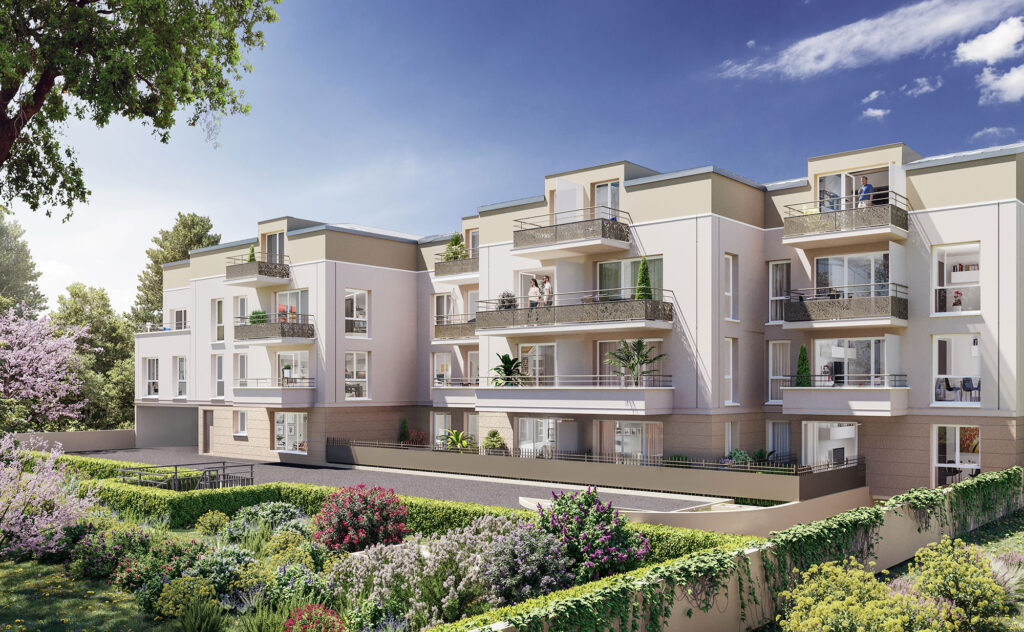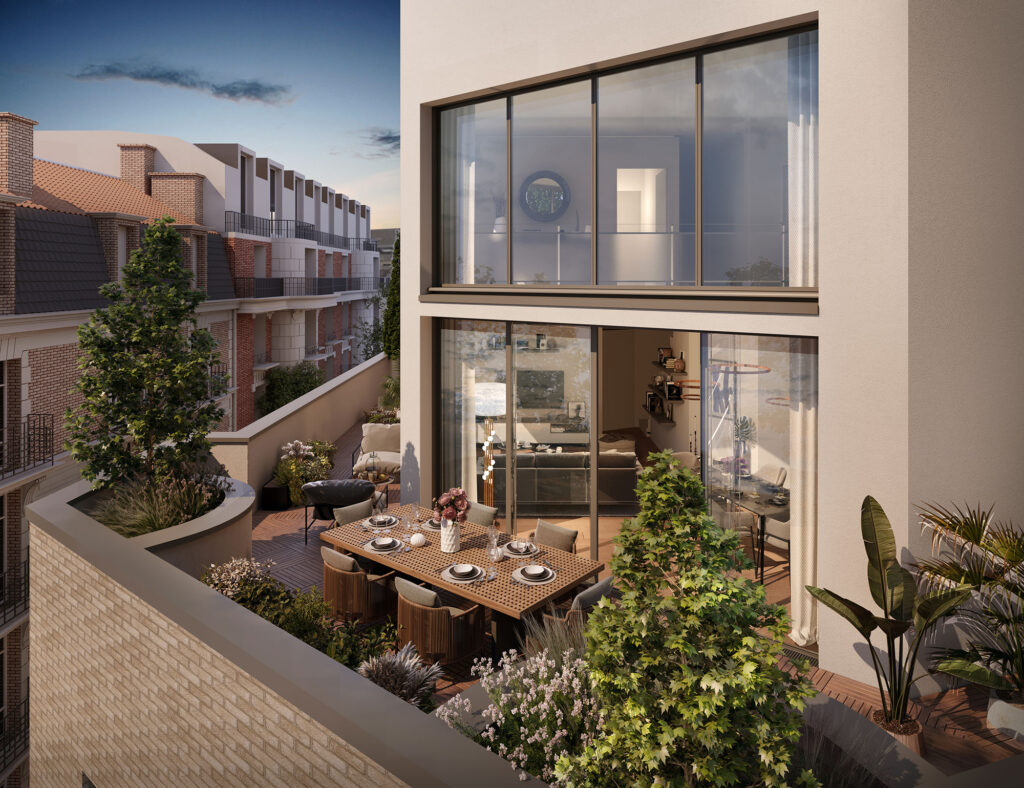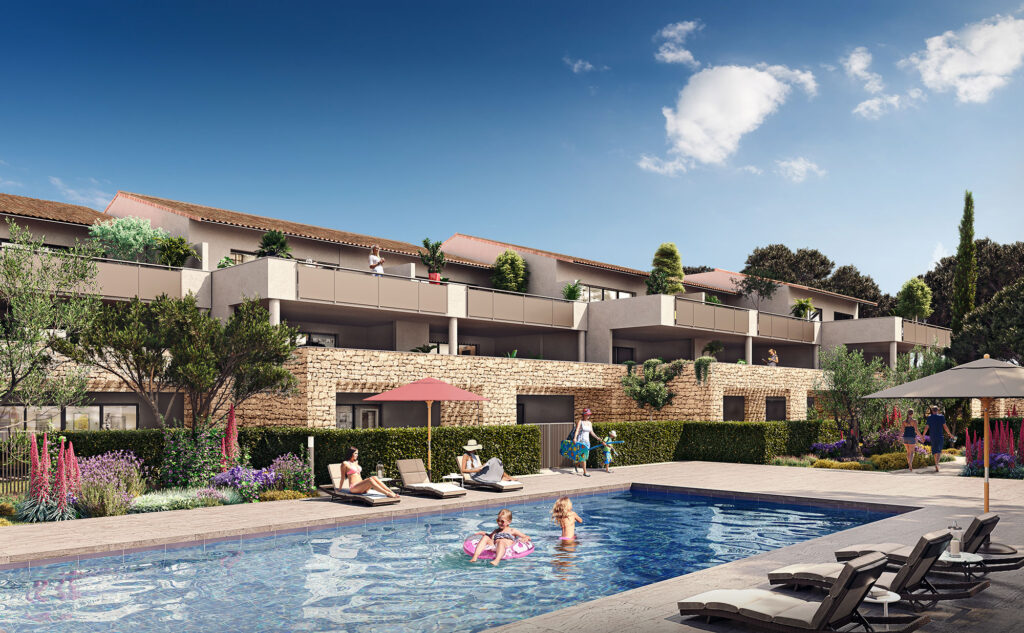The advent of hyper-realistic rendering in the real estate sector has profoundly transformed customer expectations. Customers are increasingly demanding in terms of visual quality anduser experience.
In their perpetual quest for additional realism and aesthetic appeal, real estate professionals can no longer ignore these demands. The visualization of details, immersive experiences and easier understanding of the real estate project are now the criteria that guide customers' choices.
Discover how hyper-realistic 3D rendering is revolutionizing the real estate development sector and redefining customer relations.
Hyper-realistic rendering raises quality standards for customers
The adoption of realistic renderings in real estate has raised standards for realism, aesthetics and originality. This has a major impact on customer expectations.
High level of realism
First of all, a hyper-realistic rendering is a virtual representation of a property that comes very close to reality. It's a 3D rendering that allows you to observe many details in a realistic way.
Since the adoption of this technology in the real estate sector, customers have been demanding top-quality visuals in property developments.
For your 3D renderings, potential buyers should expect hyper-realistic visuals. These must feature minute details that traditional 2D images cannot reproduce.
A rendering achieves a high level of realism when it presents elements that are virtually identical to reality. In particular, it enables :
- Recognize the materials and textures used : such as kitchen tiles, roofing materials, wall textures, fur on carpets, etc... ;
- Zoom to the smallest detail : to perform this action, the visual must be high-resolution;
- Rotate 360° : the ability to explore every angle of a room enhances realism;
- Visualize furnishings : this feature meets the needs of customers who want to simulate furniture layouts;
- Observe the surrounding environment : having the option of observing the view outside, the garden or the parking lot adds a touch of realism.
As you can see, the more realistic the visual, the more interested the potential customer will be.
Aesthetic visuals
People looking for their future home are also more attentive to aesthetics. Only hyper-realistic renderings can accentuate the aesthetic appeal of a property, whether indoors or out.
When making their choice, customers are generally guided by their first impressions and emotions. 3D interior perspectives are an original way to fill them with wonder at first sight.
Originality
To satisfy customers with particular tastes, hyper-realistic renderings are the ideal solution. Do you have original real estate projectsin mind? A house with an unusual architectural style? Luxury apartments with a distinctive interior design?
Or a building with bold colors? Present your real estate programs to prospective customers using a 3D model. This tool makes it easy for customers to understand the project and make informed decisions.
Hyper-realistic real-estate rendering enhances user experience

In the digital age, a good user experience is a key customer expectation. Hyper-realistic rendering can meet this requirement in a variety of ways.
Easy purchasing process
An effective user experience means maximum simplification for the customer. Among hyper-realistic visuals, 3D models can provide information such as lot availability.
Using them in your prospecting can win you points with potential customers who don't have the time to call or e-mail for information.
You're also making life easier for them, by reducing the number of trips they have to make. With a virtual tour, customers can remain comfortably seated on their sofa while visiting the premises. See the kitchen, the dining room or simulate the lighting - everything is thought out to improve the customer experience.
It can also be stressful for buyers to find the home of their dreams. But with 3D tools, the search is simplified. The realistic aspect of these tools helps them to project themselves more easily. Hyper-realistic renderings facilitate the decision-making and sales process.
In addition to offering an optimal user experience, you also make it easier to close a sale.
Total immersion
In addition to saving customers time, hyper-realistic renderings can also offer them a thrill. With interactive virtual tours, not only can potential buyers stay at home, but they also benefit from an immersive experience.
It can view every nook and cranny of a room, walk around in another room and sometimes even move certain 3D elements. But that's not all. He can also use a virtual reality headset to intensify immersion.
Better accessibility
Hyper-realistic rendering is accessible to the general public. And accessibility is an essential principle of the user experience.
All you have to do is integrate your 3D visuals (3D plan, 3D perspective, orbital model, 3D video...) into your website, so that potential customers can view them at any time. You can also share them on social networks to broaden your audience.
This makes it a decisive factor in the customer's choice.
Hyper-realistic 3D rendering makes customization easy
3D renderings have changed the expectations of customers, who are now looking for an increasingly personalized experience. By offering them these tools, they will feel listened to and will be able to express their real expectations.
Better communication
Previously, we had to hold frequent meetings with customers to present the progress of the project under construction and hear their feedback. This can be tiring for both parties. But thanks to hyper-realistic renderings, communication is much easier.
By viewing a 3D plan or 360° model, customers can easily understand the different aspects of the real estate program. They can keep track of the project's progress, and will be able to explain what they like, and what they don't like. This individualized experience is very popular with customers.
Possibility of adjustments
Hyper-realistic renderings, such as 3D models, sometimes incorporate modification options. Potential buyers can therefore carry out tests and simulations in the apartment. For example, they can change the color of the walls, replace a piece of furniture or move an object.
Hyper-realistic rendering enhances credibility with customers

When it comes to real estate, one of the latest customer expectations is professionalism. This requirement is justified by the need for transparency and reliability, a need reinforced by hyper-realistic renderings.
Sign of transparency
A hyper-realistic rendering, as the name suggests, remains faithful to reality. That's why customers prefer professionals who adopt this technology. Indeed, 3D modeling of an existing property uses real images. To create a realistic rendering, you need :
- Shooting images from different angles;
- Assemble images using software ;
- Add textures and lighting;
- Finalize the rendering.
As you can see, photo-realistic 3D images offer a faithful visualization of reality. Their use reinforces your credibility as a real estate professional.
Image de marque
Customers naturally choose real estate developers who inspire confidence. To achieve this, you need to improve your brand image and stand out from the crowd.
Integrating hyper-realistic renderings into your communication materials and real estate marketing is an excellent way of achieving this goal. As we've seen, these 3D tools are a guarantee of transparency, boosting the confidence of potential customers.
They're also a way for you to show that you're keeping up with technology trends.
Get photorealistic renderings for your real estate projects








